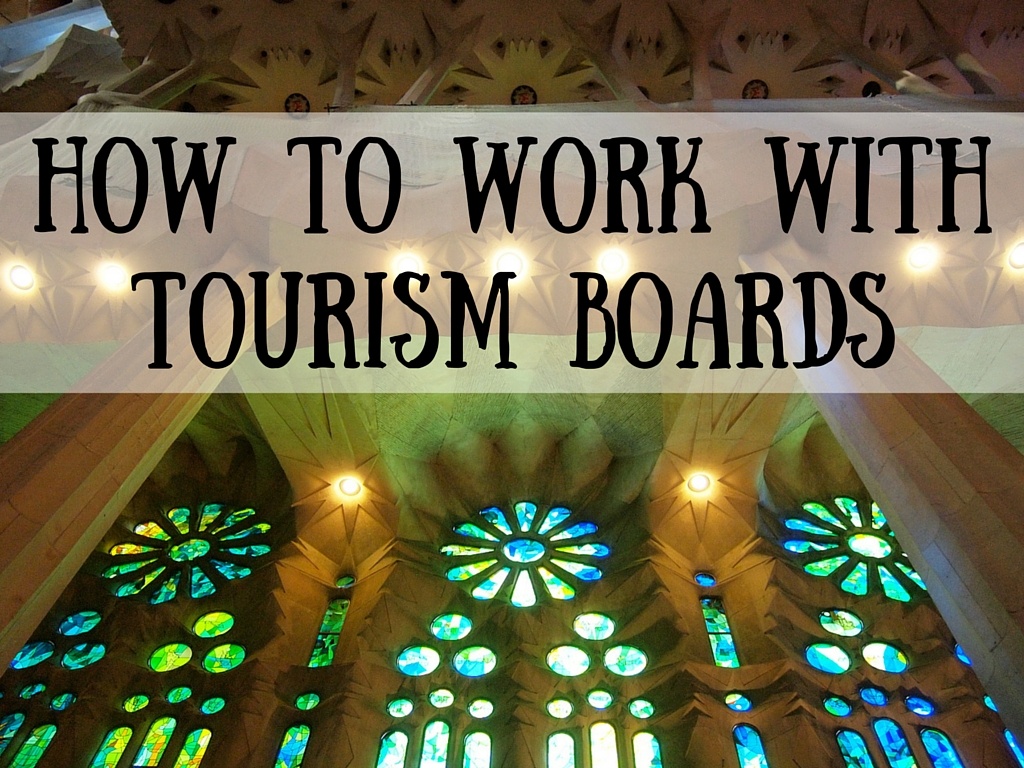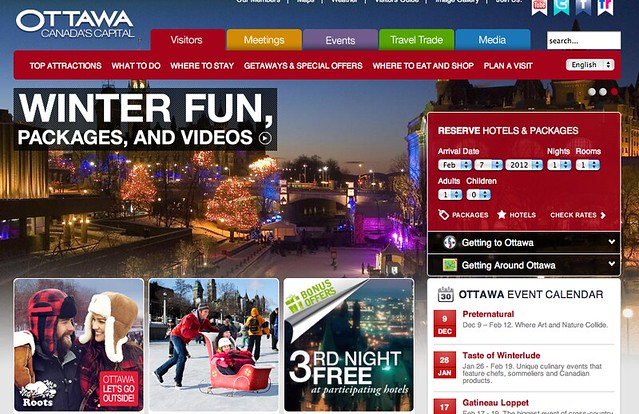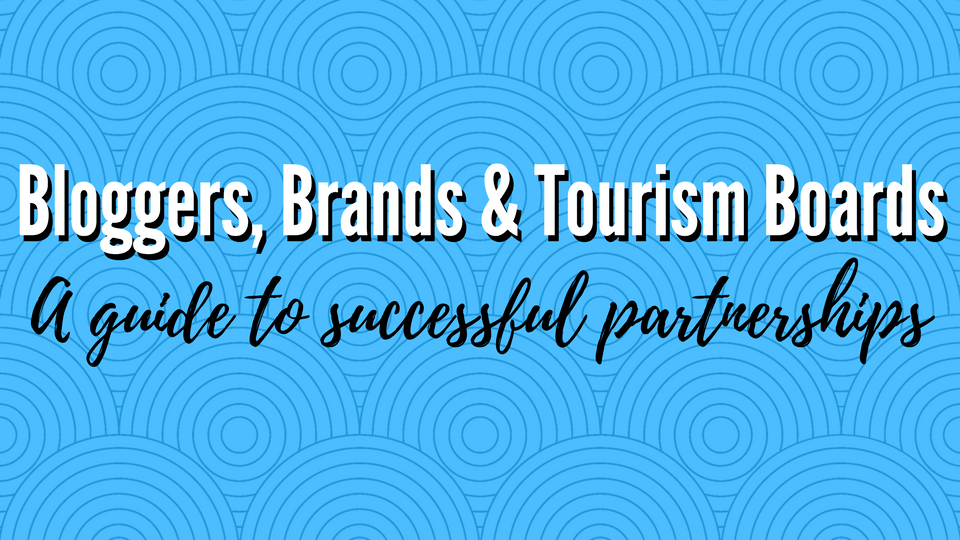How to Work with Tourism Boards

Despite the fact that I realize not everyone will be interested in this subject, I still feel like it's a topic worth addressing. More and more recently, I've been fielding questions from bloggers and non-bloggers alike about how I manage to work with tourism boards and companies when I travel.
Using a 2012 trip to Ottawa as an example (where I worked with both Ottawa Tourism and the HI Ottawa Jail Hostel), here are some answers to common questions I've received about working with tourism boards.

Common questions about my sponsored travels
(Note: This is not a post about “how to get invited on press trips” or “how to score free stuff when you travel.” If that's what you're here to find, you can navigate away right now!)
“How do I know when my blog is “big enough” to pitch to companies/tourism boards?”
The truth is (and I know this isn't what any blogger wants to hear), there's no “magic number” when it comes to knowing when it's the right time to start pitching. If you send the right pitch to the right company/tourism board, things like page views and RSS subscribers and Twitter followers won't really matter much.
In general, though, you want to be able to show that you have an engaged audience — regardless of how big it is. In my mind, a solid, small engaged audience is much more valuable than a large, indifferent one. My audience is by no means huge, but I've been able to encourage a lot of discussion and engagement on both my blog and social networks, proving that I'm not just writing all of this for myself. People actually read what I publish and respond to it, and Ottawa Tourism hinted that this was the main reason they decided to work with me.
But how do I build an engaged audience?, you ask. Well, the key to an engaged audience is content. It really is true that content is king. Before you start thinking about pitching to tourism boards and companies, build up a solid blog with top-notch content. Know what your niche is (if you plan to have one), and what you want the tone of your blog to be. And, above all, let your voice and personality shine through — this is what truly will grab the attention of tourism boards.
“How do I go about pitching?”
So you think you've developed your blog and audience enough to where you feel confident pitching to a company or tourism board. What's next? Here are my main tips for before you pitch, and for actually drafting the pitch itself.
Before you pitch:
- Know what you ideally want. You obviously have to first know where you're going (and when) and then you need to figure out more or less what you're going to ask for. Do you want all your expenses covered or just one specific part of your trip? Are you hoping for a fully comped tour or would you be happy with a media discount? Figure this out before you even think about pitching.
- Know what you can offer in return. Almost as important as knowing what you want, you should know what you can offer a company or destination in return. What value can YOU offer THEM? Why are you a good fit for their brand or destination? How much coverage will they get from working with you, and who is going to see that coverage?
- Figure out who to pitch to. The next step is figuring out who to pitch to. Do a bit of detective work on the company or destination's official site or social media accounts. If they have a media contact listed, that's who you should pitch to. If you can avoid sending your pitch to a generic “info” e-mail address, do.
- Keep in mind the time of year you'll be traveling. Will you be traveling to a destination during their high season or in the off-season? If you're traveling during high season (or around a popular event), send your pitch as early as possible. A tourism board might not be able (or willing) to accomodate you at the last minute. Since I was traveling to Ottawa in the dead of winter, I was fine contacting Ottawa Tourism a mere 3 weeks before my trip. But I wouldn't recommend waiting so long if you can help it.

Drafting your pitch:
- Introduce yourself completely (including who you are and who your audience is). Don't be vague. Be confident in yourself and your blog, and give a sense of who reads what you publish.
- Tell them when you'll be there (be specific). Especially if you are hoping to get a sponsored tour or have your hotel/hostel stay covered, you will need to know the exact dates you'll be traveling. If you don't have your dates chosen yet, you probably aren't ready to send a pitch.
- Be clear with your request, but also flexible. Above I mentioned that you should know what you ideally want before drafting your pitch. I still recommend this. But you don't want to come off as demanding on entitled in your pitch. So lay out what you would like to receive, but also be flexible in your request.
- Provide stats, but expect them to do their own homework, too. I usually include my main stats in a short paragraph to sum up the size of my blog's audience, whether it's asked for or not. But I know for a fact Ottawa Tourism checked out all of my social networks on their own, too. So don't inflate those numbers too much.
- Make your pitch professional, but still use your voice. When drafting your pitch, you want to make it more formal that something you'd post on your Facebook wall, but not so stuffy that it doesn't reflect your personality. This is your chance to sell yourself — do yourself justice.
- Send a media kit. I highly recommend putting together a media kit for yourself that you can send out to potential partners. In this kit, you can go into more depth about your audience, your stats, and what you can offer. I also include testimonials in mine, proving that what I write actually inspires others to travel to certain destinations or spend their money with certain companies.

Want to see some sample pitches? Check out my course on partnerships for detailed examples!
“Should I just pitch to everyone?”
The short answer is no. This is not just about “scoring free stuff,” no matter how appealing that idea is. Before you think about sending out a pitch, educate yourself about the destination or company you're considering. Will it fit in with the rest of your blog's content? Is it in line with what your audience is interested in?
Not every destination, company, or tourism board will be a good fit for your blog and audience. And that's okay. The bottom line is, don't send out pitches just to send them out.

“But what if they say no?”
If you're afraid of rejection, I have some bad news — you probably will get rejected. Other times you may never get a response to your pitch. But who cares? You shouldn't be planning your travel counting on free trips anyway.
You'll learn more with each pitch you write and with each sponsorship you secure. Don't look at rejection or being ignored as a bad thing — look at it as a learning opportunity.
Here are my tips for dealing with being ignored or rejected:
- Follow up on your pitch. If you haven't gotten a response to your pitch within a week, send a follow-up e-mail, or even give the contact a call if you have a phone number for them. It's very easy for e-mails to slip through the cracks, and many PR reps are extremely busy. A friendly reminder can't hurt; sometimes you just have to be both patient and persistent.
- Try again. Got rejected? Don't sweat it. There could be many reasons for receiving a rejection — maybe you weren't confident enough in your pitch; maybe they just don't have the budget to sponsor you; maybe you didn't get in touch soon enough. Regardless of the reason, just forget about it and try again somewhere else.
- Get more creative. If you're consistently getting rejected, maybe it's time to go back to the drawing board. Maybe your blog needs a makeover. Maybe you need to concentrate on building your audience and polishing your content for a while. Maybe you need a catchier pitch or media kit.
- Realize it might be them, not you. Sometimes it's all about the timing — timing you may not even know about. Maybe you sent your pitch when they had just run out of extra funds that month or year, or maybe your pitch got lost during restructuring in the company. Things happen, and you certainly can't control them all, or even prepare for them.

And, at the end of the day, some companies and tourism boards just don't “get it” yet. This whole blogging thing is fairly new, and not everyone has embraced the idea of treating bloggers like they would traditional media. Ottawa Tourism definitely sees the value in online media, but not all boards and companies I've approached do. Sometimes you just have to chalk it up to a loss and hope they'll come around eventually.
Because, despite the fact that not everyone “gets it” right now, bloggers really can offer companies and destinations a lot if sponsorships/partnerships are approached in the right way.
Learn more about working with brands/tourism boards
Curious to learn even MORE about working with travel brands and tourism boards?
If you liked this post, then you should check out the in-depth course I've created all about successfully pitching and working with travel brands and tourism boards.
Bloggers, Brands, and Tourism Boards: A Guide to Successful Partnerships consists of 29 lessons, expert interviews with bloggers and PR professionals, and worksheets covering everything from developing and pitching ideas to delivering and following up on effective campaigns. The course also includes best practices for working with brands and destinations, a detailed lesson on how to create a media kit, a LOT of sample pitches, and a look at social campaigns and brand ambassadorships and how to land them.

Amanda Williams is the award-winning blogger behind A Dangerous Business Travel Blog. She has traveled to more than 60 countries on 6 continents from her home base in Ohio, specializing in experiential and thoughtful travel through the US, Europe, and rest of the world. Amanda only shares tips based on her personal experiences and places she's actually traveled!












Amanda, at the risk of sounding like a broken vinyl-record, I feel your timely post goes very well with C&C yTravelblog’s post about press and blog trips. I’ve been wondering about some of the steps various people undertake to work with tourism boards. Thanks again for your post!
Ultimately, different people will approach pitching differently. But this is what has worked for me, and I think there are certain practices that will work for everyone!
Hey Amanda, this is a very timely post. I’ve been thinking lately about trying to pitch some tourism boards about sponsored trips. I like the idea of putting together a professional looking media kit along with sending a letter that is very specific outlining not only what you want but how you can help them out in return.
And the part about outlining what you can offer them is so important! You definitely don’t want to present yourself as having a “me me me” attitude. Figure out how to make it a win-win situation!
Hopefully this helps you out in writing some of your own pitches soon.
Thanks for these Amanda! I’ve tried this a couple of times and have had some great success with it. Some tourism boards are much better at the social media thing and appreciate bloggers. Others don’t get it yet and don’t see the value. I think as long as you make a good presentation to show how you can benefit both of you, you’ve done your part. The rest is up to them. And any rejection from them shouldn’t be taken personally. As you stated, it could be for a number of different reasons – bad timing, not understanding the value of what you can offer, and sometimes stuff falls through the cracks.
I am by no means an expert on this (I don’t even have a media kit) and have made mistakes. However, just asking questions can be a great way of getting ideas for things to do. I would also encourage people to leave time to explore and let stories and experiences happen all their own. In other words, don’t play too much. Some of the best stories/moments that you experience on a trip were those that weren’t planned.
Very well said, Jeremy. I couldn’t agree more that you shouldn’t take rejections personally, and that, even if you do get some sponsorships, you should still leave enough time for exploring on your own. This is one reason I actually prefer to organize my own press trip-like trips, so that I have a bit of freedom.
Awesome post Amanda, and thank you for the link love. I had written a post about tips on scoring freebies, but you’re right, it isn’t about that. It wasn’t my intention, thought when I read back I think I may have come off that way, and I’m glad you pointed out some of these important subjects. Each person I have sent out emails to is something that interests me very much, and something that I feel may benefit other people who read my blog, which should be most important when pitching. If I score a free trip to a Mustard factory, and being I am deathly afraid of mustard, that wouldn’t benefit me or the readers at all.
Also, I emailed a few hostels in Christchurch before I came down, ones that I wanted to include in a backpackers guide, and they all said they would have loved to work with me, but every single hotel and hostel was fully booked. Just like you said, timing is important, and I failed to look far enough ahead!
My email I send out to hostels and activity companies looks similar to your letter (except without those awesome numbers) but I actually have no idea how to do a media kit so I will be emailing you!
Amanda, I was starting to go a little overboard with small time “freebies” and looking everywhere for them, it becomes addicting after you get a couple free meals and free movie tickets and others, but that doesn’t benefit anyone much. This really helped me set my head straight again, bloggers like you are always teaching me so much, and when you’re new it’s easy to get lost in the material things, but my goal has always been to write for myself, and the sake of travel and my potential readers. Refocused!
Stay gnarly!
(P.s. I have a post on Traveldudes.org “7 Tips for getting sponsored trips” where readers were asking me about a pitch example, can I link your post for them?)
Thanks for the great comment, Ryan! I’m really glad you found this post helpful, and that it helped you refocus your efforts a bit. It certainly CAN be exciting once you realize that some companies would love to throw all sorts of free stuff at you. But I think there needs to be a point where you know when to say no. Like you said, things like free movie tickets and lots of free meals might be nice, but getting them really isn’t going to benefit anyone but yourself. And while I like doing things for me, I also like to be able to help others out, too, by sharing what I’ve learned!
And even though it’s too bad you weren’t able to book in at any of the hostels in Christchurch, that is GREAT to hear that they’re all full!!! The city seems to be bouncing back well.
Feel free to share a link to this in your TravelDudes post. The more the merrier!
I had a recent success with a sponsored tour in Patagonia. In the initial response, I was told that the only reason they were willing to look into the partnership further is because my proposal showed an understanding of their business model. I mentioned in the post that I would include descriptions and links to their travel partners. This turned out to be key.
I didn’t go into a whole lot of depth about this because it has more to do with specific companies, but knowing what the company you’re pitching to is “about” is so important. It kind of goes along with knowing whether they’d be a good fit for you to write about on your blog. Doing your homework is SO important before writing a pitch! If you can tie your interests to their business model or their core values, chances are they’ll notice that you put some extra effort in.
Congrats on the trip!
What an incredibly helpful post! Thank you so much for the tips and insight. This is by far the most straightforward and transparent advice I have seen on how to work with the boards. Much appreciated!
You are most welcome! Thanks for such kind remarks. I just tell it like it is. 🙂
Thank you so much for the post, it was very well thought out. This is something we may consider in the future, perhaps.
I’m glad you enjoyed it, and I hope it helps you in the future if ever you decide to seek out some sponsorships!
I love posts like this. You worked hard to get where you are and it’s paying off! Plus, it’s written for newbies like me who haven’t yet dipped their toe in, but hopefully will someday!
Great post!!
Thanks, Rebecca! I HAVE worked very hard to get where I am, and all the work is most definitely beginning to pay off. But, now that it is, I want to share the things I’ve learned with others, to hopefully make the process easier for them. I would have killed for a post like this last year when I was clueless on how to write a pitch!
I couldn’t have asked for a better post! It had all the information I have been wondering about. One of the main points I came away with was to just ask. Thanks for the kick in the pants I needed 🙂
Glad that I could help, Debbie! Good luck!
This is such a great article. I appreciate the letter. I send out a lot myself, but to specify hotels and tours. I have never done to tourism boards.
I have mostly pitched to specific companies, too (for tours, activities, etc.). Ottawa was the first major tourism board that I sent a real pitch to. But I think a tourism board can be a great place to start if you aren’t sure what you want to do in a region/city (as was the case for me in Ottawa). If I’d had very specific things I wanted to do and see, I likely would have contacted companies/attractions individually.
Thanks for this post! I’ve never pitched any of my travels to anyone – mainly because it seems a little intimidating and I wouldn’t even know where to get started. After reading this, I think following your lead here and maybe individually setting up some things is a possibility for the future though. Thanks for the tips!
And remember that you don’t have to start out huge, Sabrina! If pitching to an entire tourism board seems too daunting, start smaller. My first real pitch was for a $60 bus tour of the island of Oahu when I went there a year ago. Barely a drop in the bucket for the company, but a huge confidence booster for myself when they said they wanted to work with me!
Good point! I think I’ll start with tiny, little baby steps and see how it goes. Really though, thanks for explaining how you make it all work.
Great tips Amanda! I’ve been doing something similar and have received positive responses from the majority of tourist boards I’ve approached. I have never been invited on a press trip either but doing things on an individual basis works out much better for me and it probably would for most bloggers.
Great to hear you’ve been getting positive responses, too! I think part of it has to do with tourism boards being more willing to work with bloggers, and the other part just has to do with the professionalization trend in blogging in general. I agree though that, for me, I prefer to work things out on an individual basis as opposed to going on a press trip. Much more freedom that way.
This is really helpful Amanda! I love step by step guides like this. Pitching these agencies always seemed so intimidating to me. Thanks for breaking it down to an easier, more managable process.
You are very welcome, John! I know how intimidating pitching can be (from experience!) so I figured there definitely would be an audience for this post.
Great actionable advice, Amanda!
I think the point of the media kit is currently underestimated. Many companies and tourism boards will not be able (or willing) to go look through a blog or website to find out more about a travel blogger that contacts them. Being able to send a concise, yet compelling media kit could definitely make a difference.
Thanks for sharing.
I definitely agree about the media kit, David. I just started using one recently, and the response has been great. It makes it so easy for a PR person to get an overview of my blog without them having to lift a finger, which I think they really appreciate.
Thanks for reading!
Great tips!! My only complaint is that you didn’t publish this sooner – like before I started reaching out to everyone throughout the Caucasus and Central Asia. 🙂
I think it is important to keep in mind that this whole blogging thing and working with bloggers is very new (or even unheard of) in many parts of the world (I am definitely finding that out now). Do you ever find yourself making a plug for blogging/social media in general when you are pitching?
Haha, sorry I didn’t post it sooner, Katie! I didn’t really think anyone would want any advice from me, though, until I started getting some of these questions recently…
And yes, I do sometimes find myself making a plug for blogging/social media when I’m pitching. I didn’t feel a need to for Ottawa since their media page was welcoming and they have a good presence on Facebook and Twitter. But in other pitches I have pointed out the benefits of blogging over traditional media — that bloggers provide both immediate coverage while they travel, and then more coverage after the trip. While a print journalist may produce 1 or 2 stories for publications after a 5-day press trip, a blogger might do 5 or 6 and also throw in a video. Blogging is also more flexible, too, in that usually a blogger isn’t “on assignment” from an editor with a story idea already in mind before they arrive at a destination, meaning they have a bit more freedom in the content they ultimately produce.